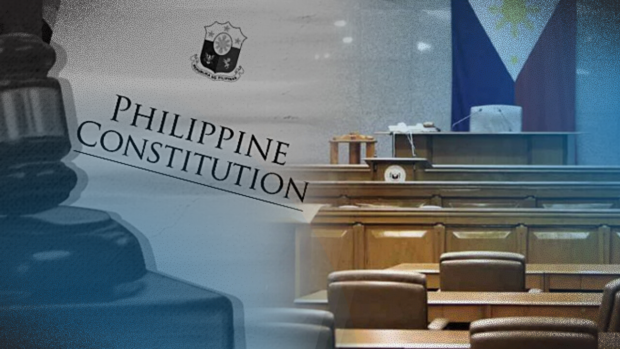Zubiri bares plan to amend rules for Cha-cha ‘Senate assembly’

The upper chamber of Congress plans to amend its rules to sit as “a Senate assembly” and recommend changes to the 1987 Constitution. INQUIRER FILES
MANILA, Philippines — The upper chamber of Congress plans to amend its rules to sit as “a Senate assembly” and recommend changes to the 1987 Constitution, Senate President Juan Miguel Zubiri revealed on Thursday.
He said the matter was discussed with Senator Sonny Angara and Senate Minority Floor Leader Aquilino “Koko” Pimentel Jr.
As chairman of the Senate subcommittee on constitutional amendments, Angara leads the ongoing discussion on the Resolution of Both Houses No. 6, proposing changes to specific economic provisions of the Constitution.
“The plan is, when we discussed this with Senator Angara together with the Minority Floor leader, is once the committee report is signed, that is a trigger for us to take it up on plenary for discussions and debates,” Zubiri said in an interview over ANC’s “Headstart.”
“Well, of course, we have to amend the rules to allow this. This is the first time we’ve done this, which is basically discussing already in plenary particular amendments to the Constitution. So we have to amend the rules to allow what you call a Senate assembly,” he said.

Besides, Zubiri pointed out that the name constituent assembly “does not appear in the Constitution.”
“It’s an animal that we just coined by ourselves,” he said.
According to the Senate chief, the Constitution simply states that the Senate and the House of Representatives could amend the Constitution with a three-fourths vote.
Section 1, Article XVII of the 1987 Constitution states that the Congress “upon a vote of three-fourths of all its members” may propose amendments to or revision of the Constitution.
The two other methods are through a constitutional convention and a people’s initiative.
Once passed at the committee level, Zubiri said the proposed amendments will be presented to the Senate floor separate from the 3 p.m. regular session.
He said senators will hold plenary sessions to tackle the amendments to the Constitution specifically.
“So in the mornings, we sit as an assembly, debate on this particular amendment, then we’ll vote three-fourths, it’s about 18 votes. We need about 18 votes for amendments,” the Senate leader said.
“Once we do that, and it’s carried, for example, after several weeks of debate, we approve it with 18 votes, then we present the final version to the House for them to adopt, or they can come up with their own rules also doing the same thing, and then we have a bicameral report,” he said.
Zubiri stressed both chambers must agree on the changes during the bicam.
With a three-fourths vote, the Senate and the House would have to approve the bicam version separately “to make it final.”
How changes to the Constitution should be made has long been a contentious issue whenever there is a new Charter change bid.